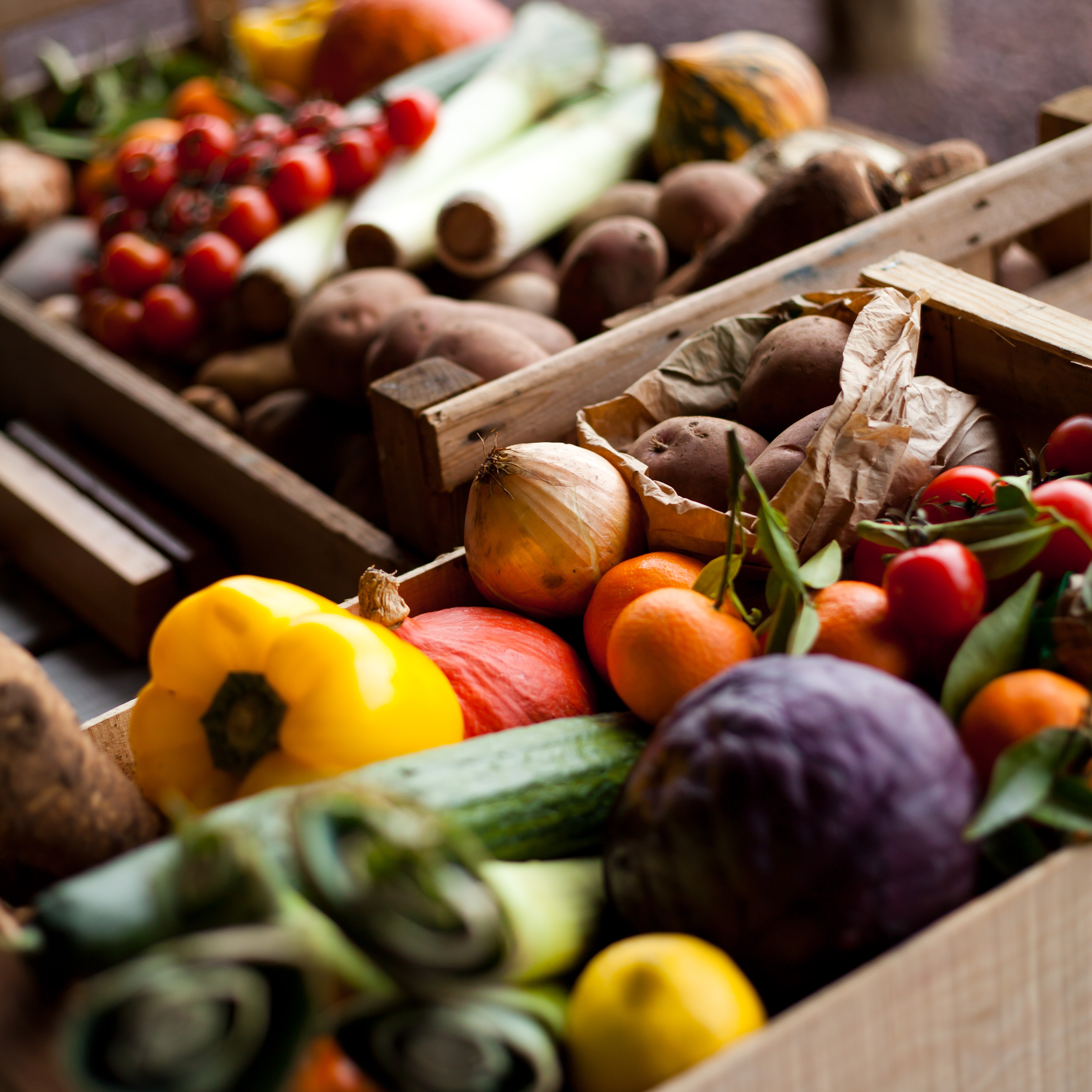While our great-grandmothers had root cellars to keep many crops from spoiling, many of us have access to an unheated garage, crawl space, or basement room that will do the job just as well. Storing Fall crops like squash, potatoes, apples, and onions will save you both time and money! So let’s take a look at which vegetables are the best choice for long-term storage, and the best ways to keep them fresh all winter.
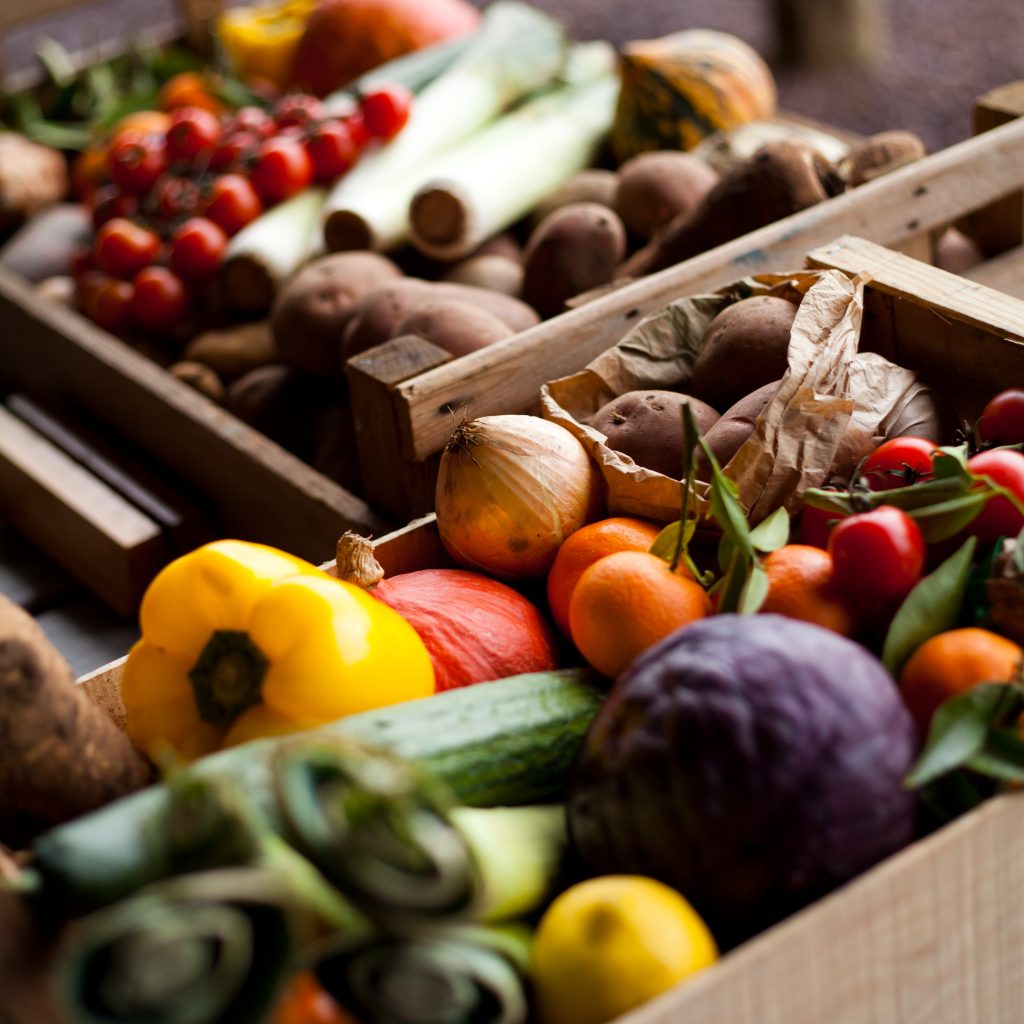
Storing Fall Crops
Beets and Turnips– Cut off the tops and trim the taproot of beets to an inch long, trim tops of turnips to an inch. Don’t wash them, just brush of the loose dirt. Store in boxes or totes filled with damp sand or sawdust, since they need moisture to keep fresh. Check the storage conditions often to see if you need to add moisture. Both will keep up to five months this way, when kept between 32-35 degrees.
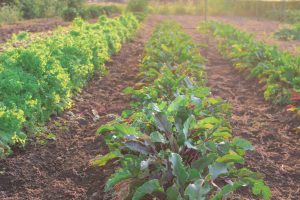
Beets in the Garden
Carrots and Parsnips – The bigger the better when it comes to storing carrots! The biggest ones will last the longest. Brush off any dirt and remove the tops. Begin layering in a box of damp sand or sawdust with the biggest ones at the bottom, that way you’ll use the smallest ones at the top first. Add two inches more damp sand on top, and store at 32-35 degrees. They should last up to six months.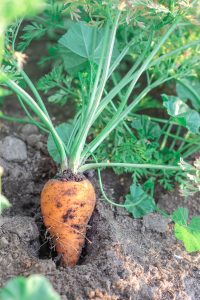
Apples and Pears – Choose varieties that will last a long time in storage. For apples, Red Delicious, Rome, Winesap, Northern Spy, and Crispin all store well. Good storage pears are Anjou, Bosch, Comice, and Winter Nelis. Choose only undamaged fruit with no bruises. Wrap each fruit in newspaper, and place in baskets or boxes. Keep between 32-40 degrees, and check often for rotten or spoiled fruit to remove. Keep them away from onions or potatoes, and they’ll last up to five months.
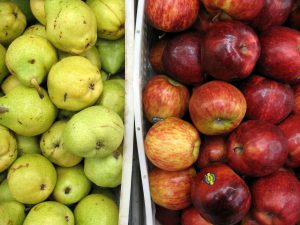
Apples and Pears
Cabbage – Pull out of the ground and keep the roots attached. Wrap each head in newspaper and store in bins. Try to keep them away from other stored crops (and from living spaces) since they give off a strong smell. Keep them between 32-40 degrees at 80% humidity, and they should last up to four months.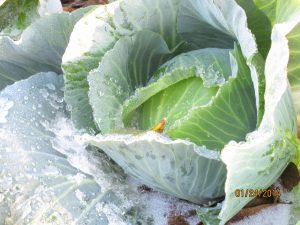
Potatoes – Wait until the plant dies back completely before digging them up, they’ll last longer that way. Remove any that have been damaged by the shovel. Lay your keepers in a cool shady spot for a couple weeks to cure and thicken the skins. Check carefully for mold, and throw out any moldy potatoes. Some of the longest keeping varieties are Yukon Gold, Kennebec, Russet, Red Pontiac, and Yellow Finn. Place them in a cardboard box or paper bag, and keep between 45-50 degrees. They should last 2-3 months. Don’t wash them until you’re ready to use them. Keep them away from stored onions, as they’ll cause faster spoiling.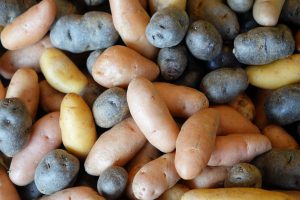
Garlic – This flavorful favorite also needs to be cured before storing, if you grew it yourself. (Most garlic you purchase from Farmer’s Markets will be cured already). Keep the stalks attached, and lay them out in the shade to dry. Then hang bundles in a shed or barn, or simply lay them out in the storage area you’ll be keeping them in. Once the stalks are crunchy dry, (up to a month) trim them off an inch from the bulb. Store the heads in baskets or mesh bags in a cool, dark, dry place up to five months.
Onions – The strongest varieties are the best keepers, so eat the mild ones first. Some good long-term storing varieties are Candy, Copra, Red Weathersfield, and Ebenezer. Harvest storing onions after the tops begin to flop over. If the weather is dry, simply pull the bulbs and let them lay on the dirt for a few days to dry out. Leave them spread in a single layer on a garage or covered porch floor for a few weeks. Once the necks are fully dried, trim the roots off the ends, and trim the leaves up to an inch from the bulb. Store in baskets or mesh bags, from 35-40 degrees. Onions can last in storage up to a year!
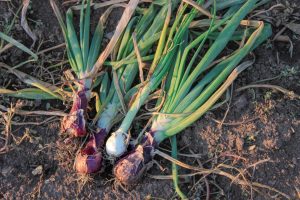
Onions
Pumpkins and Winter Squash– If homegrown, cut the squash with at least an inch of stem and let it cure in the field for 10 days. Store in a cool, dry area at 50-55 degrees. They’ll last a few months, up to six months for Butternut and Blue Hubbard.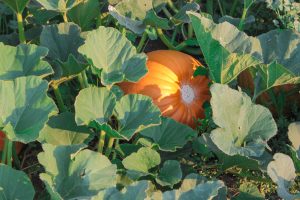
Be sure to store only unblemished vegetables and fruit, and check your storage weekly to remove any spoiled food. Be sure to eat it! Choose the ones that are starting to get soft or sprout, and use them first. By using these methods you can enjoy your produce well into winter!
Copyright Everwilde Farms 2018

